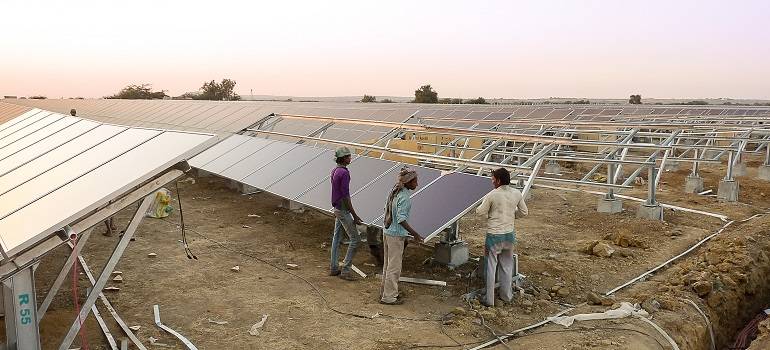
According to a study published in the journal, Environmental Research Letters, India would need over 1000 GW of solar power capacity to replace coal mining jobs.
As the countries across the globe shifts its focus from fossil fuel to renewable energy, ensuring that coal miners find jobs locally in other industries is now a precondition.
As per the study titled “Solar has greater techno-economic resource suitability than wind for replacing coal mining jobs” there is a complete incongruity between areas in India suitable for wind power and areas where coal mining is currently happening today.
The study noted “Thus, creating wind jobs is not really an option in coal mining areas in India. However, overall, solar has more potential than wind for replacing local coal mining jobs in India.”
According to the study to absorb all coal miners working in the mines, nearly 2 gigawatt (GW) of solar power would need to be installed to be installed around each coal mine.
In India, 485,000 coal miners (Ministry of Coal, 2017) produce over 700 MT of coal annually (Enerdata, 2018). Coal production in India is concentrated in five key states . In India, 1.96 GWe of solar power capacity would need to be installed in each local coal mining area to transition all coal miners to local solar jobs. As per the study ,on India, nearly all the local coal mining areas are suitable for solar power generation including in the key coal producing states .
“The means for about 0.5 million coal miners working in these coal mining areas suitable for solar power, India would require an additional 960 GWe of capacity). This would mean increasing the current capacity by nearly 37 times (from today’s capacity of 27 31GWe),” says the study.
Even if the state and federal government wanted to do it and there is energy demand in the future, building nearly 1,000 GW of solar capacity is a huge task.
The study further noted that “One of the biggest challenges would be acquiring land. Although, Coal India has large tracts of abandoned mines land, it might not be enough to create such a capacity,” said the study titled.”
Coal mining directly employs over 7 million workers and benefits millions more through indirect jobs.
Authors used Geographic Information Systems to create a 50 km radius around each existing mine and then calculated the solar and wind potential of this area.
Using the average number of coal miners per mine and employment factors for solar and wind, the authors then calculated the local and national capacity required to replace coal mining jobs with solar/wind jobs.
The study was done in collaboration with researchers from the University of British Columbia, Canada and the Chalmers University, Sweden.
Authors
Sandeep Pai, Hisham Zerriffi, Jessica Jewell and Jaivik Pathak
